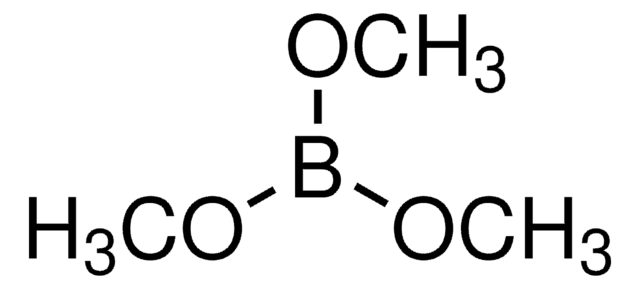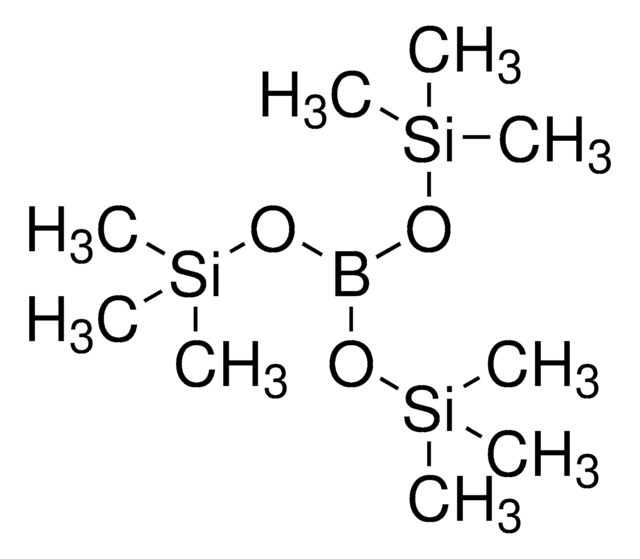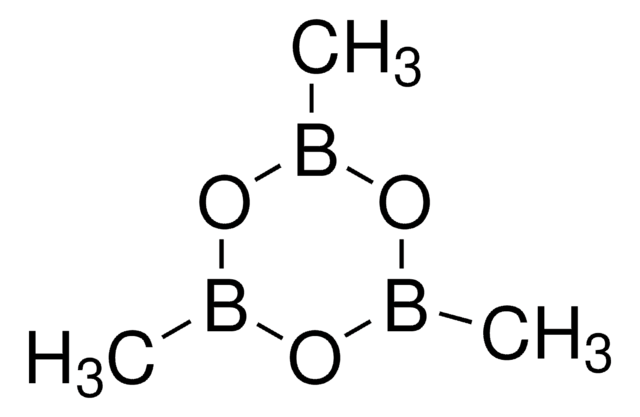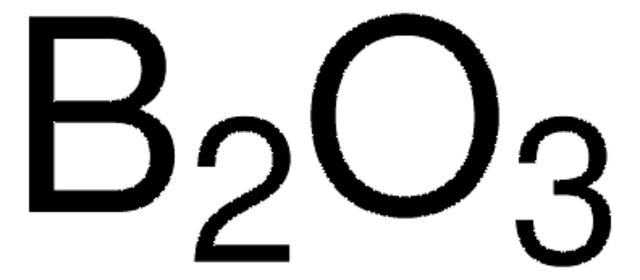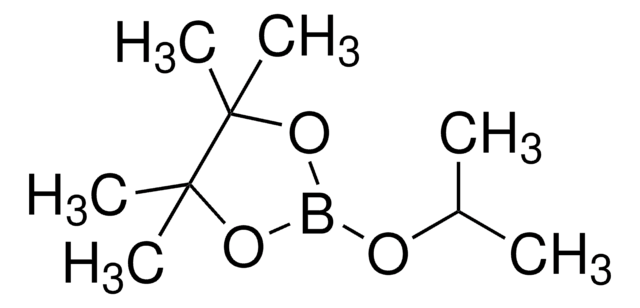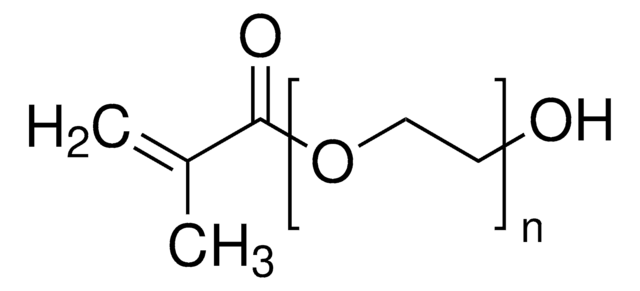443999
Trimethyl borate
purified by redistillation, ≥99.5%
Synonyme(s) :
Boric acid trimethyl ester, Methyl borate
About This Item
Produits recommandés
Densité de vapeur
3.59 (vs air)
Essai
≥99.5%
Forme
liquid
Produit purifié par
redistillation
Indice de réfraction
n20/D 1.346 (lit.)
pb
68-69 °C (lit.)
Pf
−34 °C (lit.)
Densité
0.932 g/mL at 20 °C (lit.)
Chaîne SMILES
COB(OC)OC
InChI
1S/C3H9BO3/c1-5-4(6-2)7-3/h1-3H3
Clé InChI
WRECIMRULFAWHA-UHFFFAOYSA-N
Vous recherchez des produits similaires ? Visite Guide de comparaison des produits
Catégories apparentées
Application
- A reagent in the preparation of various trialkylamine−boranes from corresponding trialkylamines using lithium hydride/aluminum chloride catalyst.
- A source of boron in the synthesis of boron nitride (BN) nanotubes by thermal-heating chemical vapor deposition (TH-CVD) method.
- An electrolytic additive for electrochemical applications.
- A reagent along with lithium di-tert-butyl(2,2,6,6-tetramethylpiperidino)zincate (TMP-zincate) for the synthesis of 1-tert-butyl-3,4-dihydroisoquinoline from isoquinoline via ortho metalation reaction.
Mention d'avertissement
Danger
Mentions de danger
Classification des risques
Acute Tox. 3 Dermal - Acute Tox. 3 Inhalation - Acute Tox. 3 Oral - Eye Irrit. 2 - Flam. Liq. 2 - Repr. 1B - STOT SE 1
Organes cibles
Eyes
Code de la classe de stockage
3 - Flammable liquids
Classe de danger pour l'eau (WGK)
WGK 1
Point d'éclair (°F)
12.2 °F - (own results)
Point d'éclair (°C)
-11 °C - (own results)
Équipement de protection individuelle
Eyeshields, Faceshields, Gloves, type ABEK (EN14387) respirator filter
Faites votre choix parmi les versions les plus récentes :
Déjà en possession de ce produit ?
Retrouvez la documentation relative aux produits que vous avez récemment achetés dans la Bibliothèque de documents.
Les clients ont également consulté
Notre équipe de scientifiques dispose d'une expérience dans tous les secteurs de la recherche, notamment en sciences de la vie, science des matériaux, synthèse chimique, chromatographie, analyse et dans de nombreux autres domaines..
Contacter notre Service technique